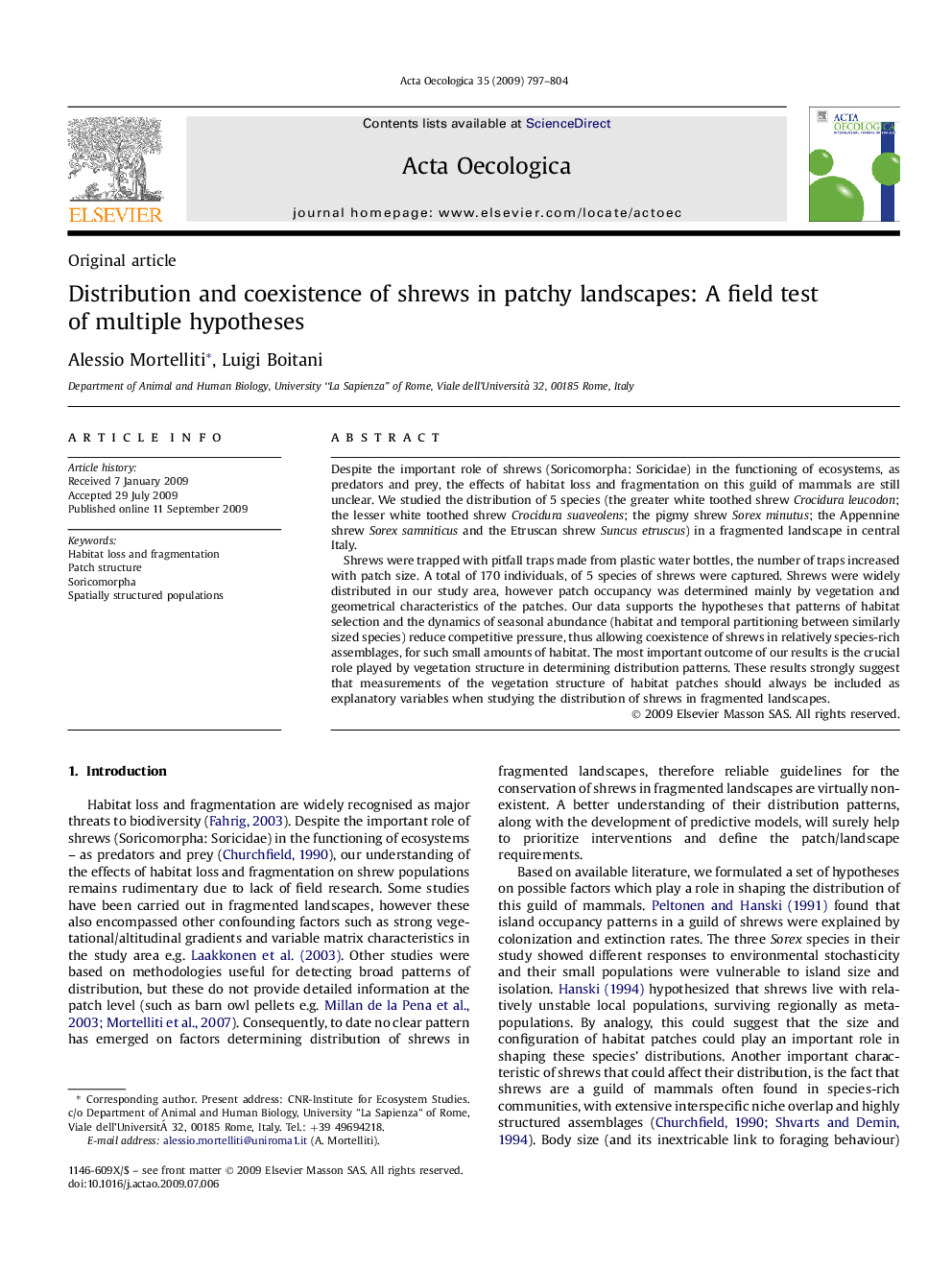| Article ID | Journal | Published Year | Pages | File Type |
|---|---|---|---|---|
| 4381134 | Acta Oecologica | 2009 | 8 Pages |
Despite the important role of shrews (Soricomorpha: Soricidae) in the functioning of ecosystems, as predators and prey, the effects of habitat loss and fragmentation on this guild of mammals are still unclear. We studied the distribution of 5 species (the greater white toothed shrew Crocidura leucodon; the lesser white toothed shrew Crocidura suaveolens; the pigmy shrew Sorex minutus; the Appennine shrew Sorex samniticus and the Etruscan shrew Suncus etruscus) in a fragmented landscape in central Italy.Shrews were trapped with pitfall traps made from plastic water bottles, the number of traps increased with patch size. A total of 170 individuals, of 5 species of shrews were captured. Shrews were widely distributed in our study area, however patch occupancy was determined mainly by vegetation and geometrical characteristics of the patches. Our data supports the hypotheses that patterns of habitat selection and the dynamics of seasonal abundance (habitat and temporal partitioning between similarly sized species) reduce competitive pressure, thus allowing coexistence of shrews in relatively species-rich assemblages, for such small amounts of habitat. The most important outcome of our results is the crucial role played by vegetation structure in determining distribution patterns. These results strongly suggest that measurements of the vegetation structure of habitat patches should always be included as explanatory variables when studying the distribution of shrews in fragmented landscapes.
